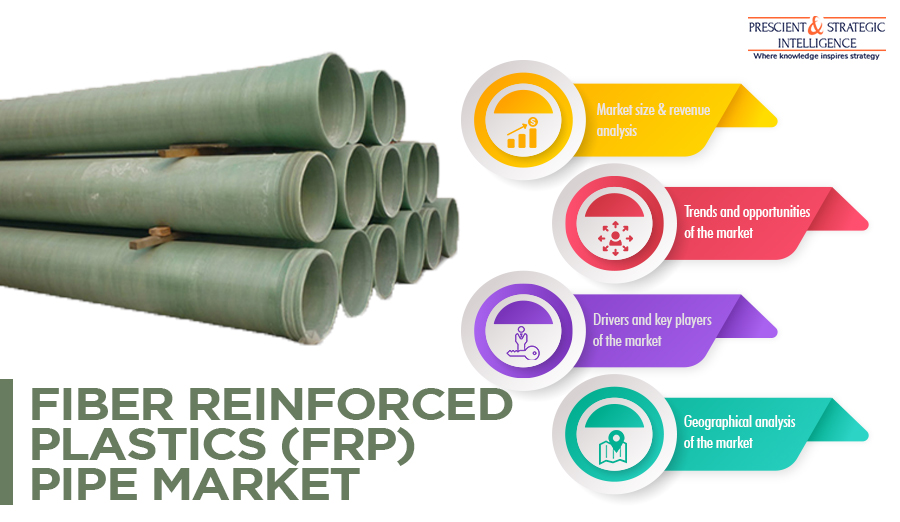The Technical Standards and Specifications laid down by the Petroleum and Natural Gas Regulatory Board, India, states the standards for the design, material, and safety of pipelines used in the oil and gas sector. The Schedule 1E of this regulation compels oil and gas companies to control corrosion and the Schedule 1D mandates the testing of pipeline equipment. Likewise, the Pipeline and Hazardous Materials Safety Administration (PHMSA) of the U.S. government assess the safety and performance of pipelines in the oil and gas sector to avoid unprecedented situations.
Get More Details Fiber Reinforced Plastics Pipe Market Competitive Landscape

At present, epoxy FRP pipes are being preferred over polyester and polyurethane variants because epoxy does not emit pollutants and it is eco-friendly. These pipes find large-scale applications in the water and wastewater, power generation, oil and gas, and chemical and industrial sectors. In contemporary years, the chemical and industrial sector creates the maximum requirement for FRP plastic pipes due to the need for corrosion and fire-resistant pipes in chemical and manufacturing plants.
The various types of FRP pipes used in such application areas are manufactured by Saudi Arabian Amiantit Company, Hengrun Group Co. Ltd., Sarplast SA, Future Pipes Industries L.L.C., Chemical Process Piping Pvt. Ltd., Sekisui Chemical Co. Ltd., Ershigs Inc., National Oilwell Varco Inc., China National Building Material Company Ltd., and HOBAS. These companies manufacture such pipes through pultrusion, centrifugal casting, and filament winding processes. In recent years, FRP pipe manufacturers have primarily opted for the filament winding process due to the benefits of automation and the low cost associated with it.
Geographically, the Asia-Pacific (APAC) region dominates the fiber reinforced plastics pipe market, especially on account of the surging construction and expanding oil and gas activities. Moreover, the booming manufacturing of automobiles will also create an extensive requirement for FRP plastic pipes in the region in the coming years. Besides, the soaring focus of governments on improving sewage treatment facilities will also facilitate the usage of such pipes, owing to the long life of these pipes.
The European region is the second largest user of FRP plastic pipes due to the increasing construction activities in the regional countries. For instance, Statistisches Bundesamt states that 146,493 and 151,657 new buildings were constructed in Germany in 2019 and 2020, respectively. Likewise, the U.K. government aims to finish High Speed Two (HS2) project, a railway endeavor, by 2033. Further, the 2024 Summer Olympics, which will be held in Paris, will result in the large-scale construction of hotels, stadiums, and commercial centers to host around 13 million spectators.
To receive free sample pages of this report@ https://www.psmarketresearch.com/market-analysis/frp-pipe-market/report-sample